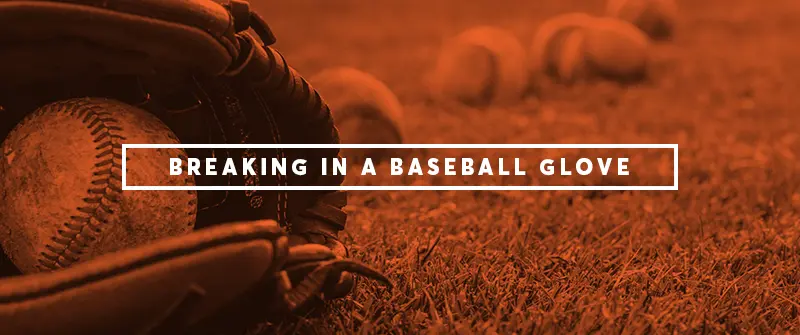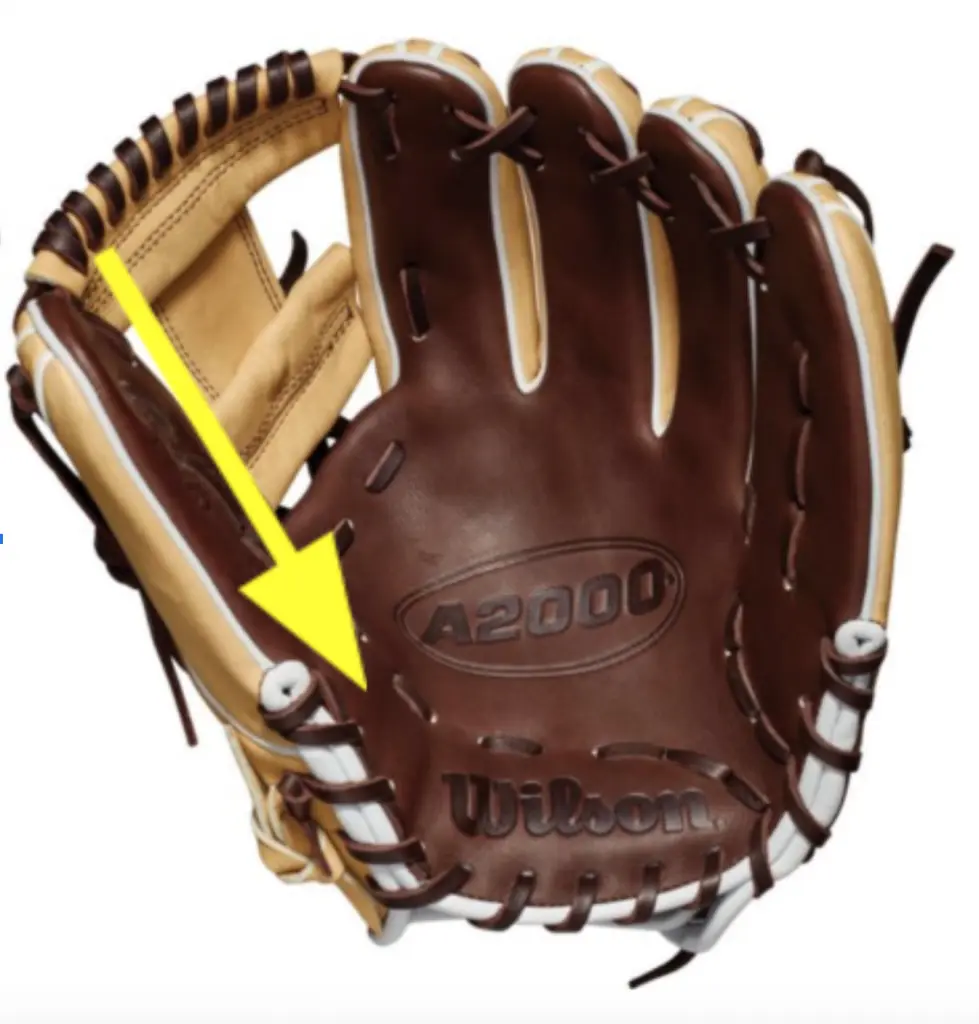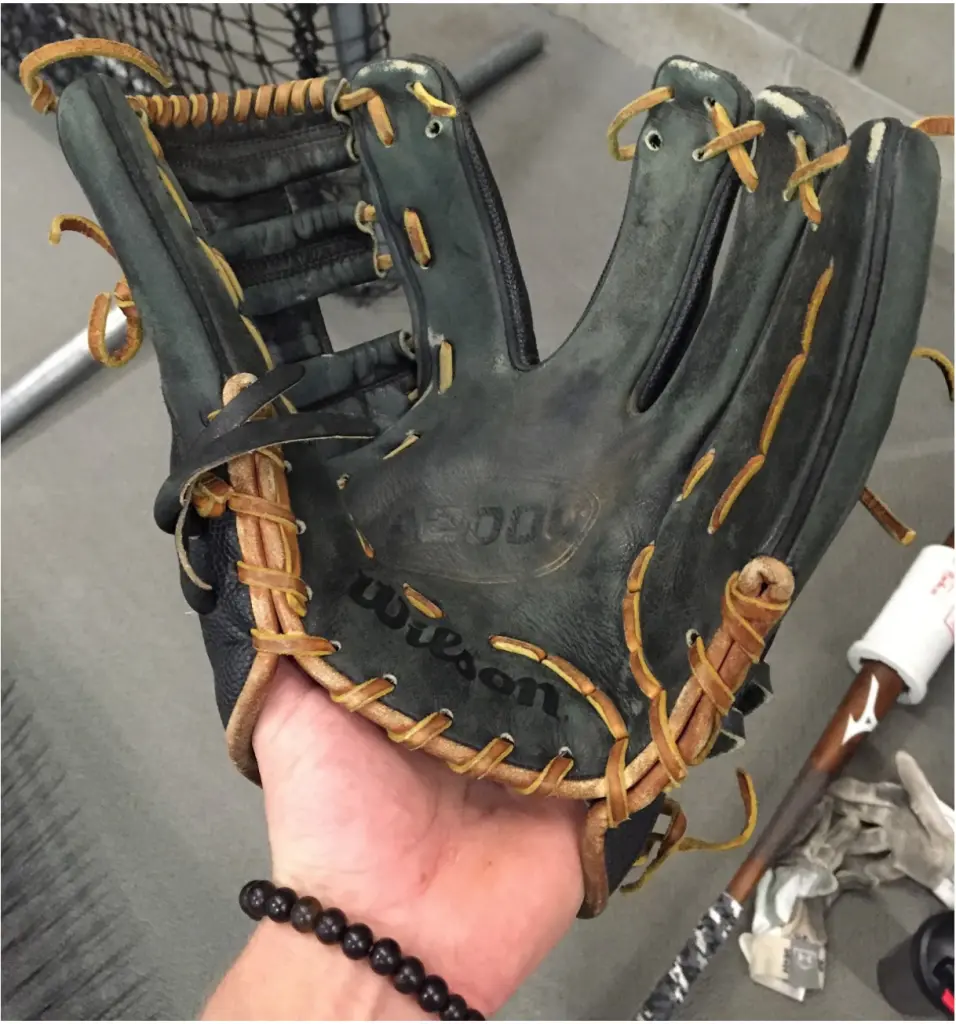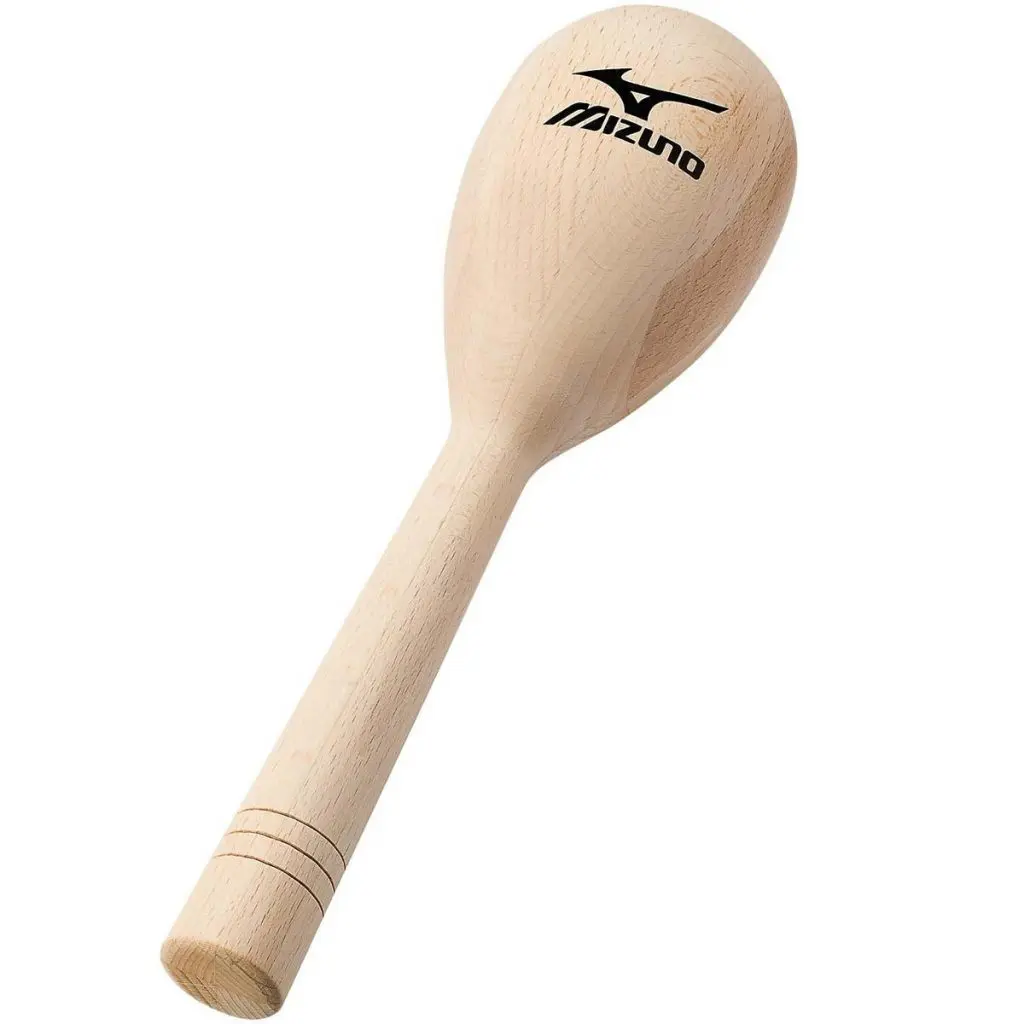How to Break in a Baseball Glove (The Right Way)

Table of Contents
- How to Break in a Baseball or Softball Glove
- Why Do Baseball Gloves Need to be Broken In?
- How to Break in a Baseball Glove – The Right Way
- How to Break in a Baseball Glove Fast
- Other Tools and Methods
- The Wrong Way to Break in a Baseball Glove
- Frequently Asked Questions
- How to Break in a Baseball Glove Properly – Conclusion
A high-quality baseball glove is one of the most important investments a baseball or softball player can make in their game.
Choosing the right mitt for your position and playing style can make a big difference in your performance. While no glove alone can make you a better defender, picking one that fits right and feels comfortable can give you more confidence on the field and help you make plays more cleanly and consistently.
That confidence comes with a hefty price tag, however, as top-tier baseball and softball gloves typically cost $300 to $400. Even if you opt for a model slightly below “elite” grade, you’re going to spend $150 to $250 for a decent leather mitt.
Looking for a new glove? Check out exclusive deals from JustGloves.
Because of that, many players and parents (especially those who are buying their first high-quality glove) want to know how to care for it. And one aspect of that is breaking it in properly.
By knowing how to break in a baseball glove the right way, you can ensure that it will hold up and perform for years to come. Unfortunately, there’s a lot of misinformation surrounding the right and wrong methods, and if you’re not careful you do more harm than good.
In this post, we’re going to talk about how to properly break in a baseball glove, and we’ll explain why many of the most common methods are counter-productive.
How to Break in a Baseball or Softball Glove
Congratulations on your recent purchase! High-quality leather gloves are expensive, but they show that you’re serious about the game and are ready to take it to the next level. Top models like the Wilson A-2000 and the Rawlings Heart of the Hide are pricey, but if you care for and maintain your new glove the right way, it’ll be by your side for many seasons to come.
Why Do Baseball Gloves Need to be Broken In?
One of the things that makes leather such a valuable and versatile material is its durability. But unused leather that has just come off the production line is often stiff as a rock, and the leather used by baseball glove manufacturers is no different.
If you’ve ever tried to catch a ball with a brand new glove, you know exactly what we’re talking about. They’re near impossible to squeeze closed, and the ball bounces out like it was thrown against a brick wall.
While gloves made from synthetic materials are designed to be game-ready off the shelf, gloves made from actual cowhide or steerhide need to be softened up. Depending on the grade of leather, the break-in period can take anywhere from days to weeks.
That said, breaking in a real leather glove is worth the effort, as its form and function will far surpass what synthetic materials can offer.
How to Break in a Baseball Glove – The Right Way
Former Boston Red Sox shortstop Nomar Garciaparra had one rule: nobody else’s hand was allowed in his glove. Nomar’s rule is a common one among elite ballplayers.
Why? Because as you break in a glove, the leather stretches and molds to fit your hand and to accommodate your movements. You want a glove that feels natural on your hand, as though it’s an extension of your arm that you forget is even there.
That’s why the best way to break in a glove — and the one you should opt for, if at all possible — is also the simplest: catch baseballs with it. With time and reps, the glove will naturally form to your hand, providing a custom fit and a pocket that’s adapted to how you catch the ball.
There are shortcuts that can help you soften a leather glove up more quickly, but none of them will produce the same quality of results. If you want the best-fitting, best-performing glove possible, you need to break it in by using it. Also, Breaking in a glove by playing catch does not harm the leather, which is a risk associated with some of the expedited methods noted in this article.
So throw, take ground balls, shag fly balls; whenever you can catch a ball with your hand in the glove, do so. It will take time, but it will be absolutely worth it.
How to Break in a Baseball Glove Fast
The quickest way to break in a glove is through a combination of warm water and manhandling. Wilson Sporting Goods’ Shigeaki Aso — one of the world’s leading glove gurus — breaks the process down in the video below.
What you’ll need:
- A bucket of hot water (not boiling)
- A cup
- A soft surface (a pillow or carpet)
- Glove mallet/glove hammer
Before we dive into the specifics, it’s worth noting that despite Aso’s esteemed reputation, there is some debate about the efficacy of his method.
Aso is a professional leather worker who crafts the finest gloves in the world. He knows what he’s doing. Aso’s method uses water, which makes the leather easier to work with but can leave it dry and brittle if not applied correctly. So, if you choose this approach, follow the instructions to the letter — and understand that mistakes can damage your mitt.
There are two types of glove hammers you can use for this approach: one of them has a ball shape at the end of it to form the pocket, and the other is more of a flat-end tool you use to simply whack the glove.
To break the glove in using this method, fill the cup with hot water and pour it over the glove. This loosens up the leather and makes it more malleable. Do not soak the glove, as that will lead to saturation and subsequent over-drying.
With the glove slightly wet, you want to focus on putting as much pressure as possible on the area noted by the yellow arrow in the picture below. This is the area that needs be pliable (because the glove has to close to catch a ball).

This is where the glove mallet comes into play. Use the mallet to hammer the pocket, which will loosen up the creese and help the glove fold.
From here, another great way to shape the pocket is to put your hand in the glove and use the mallet. This can help you make sure you’re getting the same type of custom fit as you’d get from just playing catch, although most likely to a lesser extent.
Other Tools and Methods
Glove Steaming
Steaming your glove is easy, quick and effective. However, the process can negatively affect the leather’s fibers. (That’s why steaming voids Wilson’s one-year glove warranty.)
Steaming your glove will soften it, but will also make it less durable. Players also tend to find that steamed leather fails to hold its shape, continuing to break in until it becomes almost too soft to use.
So, this can be a viable option if you need a game-ready glove today… just don’t expect that glove to last you more than a season.
The easiest way to steam your glove is to let Dick’s do it for you.
There are three steps in their steaming process:
- The technician will apply glove conditioner — this will allow the pores on the leather to open up and soften during steaming.
- The technician will put the mitt in a glove steamer — this will soften the leather to make it more malleable.
- The technician will take the mitt out and begin hitting it with a mallet, loosening up key areas.
- This process will repeat a number of times.
Glove Wrapping
Glove wrapping can be a decent supplementary method to help break in your glove. There are two schools of thought: to wrap with a ball in the pocket and to wrap without a ball in the pocket. Of those, only one is correct; you should always wrap your glove with a ball in the pocket. (You can learn more about why in the section on the mattress method, below.)
Wrapping your glove is not a complex process.
- Close the glove (with a ball in the pocket), touching the pinky and thumb together.
- Wrap the glove with string, elastic, rubber bands, or anything that will hold it securely in that closed position.
- Let it sit for a couple of days, unwrap it, and repeat the process.
Wrapping the glove stretches the leather and holds it there for a prolonged period of time, which should make it easier to work with.
Glove Conditioners and Oils
Glove conditioners and oils can be used during and after the break-in period. The first rule of using glove conditioners and oils is to use only manufacturer-approved products.
Don’t go putting Vaseline petroleum jelly, chapstick or olive oil on your glove — all of which will damage and/or saturate the leather (leaving it greasy, heavy or dried out).
Five of the best-selling conditioners are listed below. You can sometimes find these at a local sporting goods store, or order them from Amazon via the links below:
- Nokona Classic Leather Glove Conditioner
- Mizuno Strong Oil Glove Conditioner
- Rawlings Glovolium Glove Treatment
- Wilson Pro Stock Glove Conditioner
- Wilson Pro Stock Mink Oil Paste
When it comes to oils and conditioners, a little goes a long way. In general, you’ll only need to apply a light coating and rub it in gently with a clean cloth.
The point of these products is to maintain the health of the leather, and in some cases, to soften it up. Using too much can lead to saturation, which can ruin the glove.
Also, keep in mind that you generally do not need (or want) to soften your glove’s webbing, which is thinner than the body of the glove and should break in quickly on its own.
Note that mink oil can be especially helpful for making leather products more water-resistant.
The Wrong Way to Break in a Baseball Glove
Above, we listed a few different methods for breaking in your new baseball glove. Now, it’s time to run down what you should absolutely not do (under any circumstances).
Don’t: Microwave or Bake It
Microwaves and ovens are for food. Gloves are leather, and leather is not edible. So let’s keep the glove out of the microwave or oven!
Some people think using ovens softens leather up. That might be true at first, because heat makes leather more supple. However, hot air tends to be dry — and that’s certainly true of the hot air in an oven.
When you bake a glove, it pulls moisture out of the leather. That means that when the glove cools down, it’s going to be dry (and sometimes, brittle).

Don’t: Leave Your Glove in the Car
Cars get hot when you leave them in the sun. In fact, they’re like mobile ovens… which leads some people to think that leaving a glove on a hot dashboard might be a good alternative to microwaving or baking it.
But you’ll get similar results (as shown above): a dried-out glove that no glove conditioning product can fix.
Don’t: Use Shaving Cream
One of the most common tips for breaking in a glove is to use Barbasol shaving cream as a conditioner. Back in the day, shaving cream contained lanolin, a natural oil that comes from sheep.
Lanolin happens to be a pretty good leather conditioner. But today, almost no shaving contains lanolin. Barbasol shaving cream has a little bit, but not a meaningful amount.
What all shaving cream does contain is a heap of chemicals and artificial compounds that were not designed to treat leather.
What happens when you use shaving cream during the glove break-in process?
Well, by now you may have realized that the nemesis of a well-conditioned glove is dryness. As with heat, the chemicals in shaving cream can pull moisture out of the leather. On top of that, some of the chemicals have compounds that can actually break down and weaken the leather’s fibers.
Don’t: Put Your Glove Under a Mattress
The theory behind the mattress method is similar to that of glove wrapping: by forcing the glove into the closed position, you’re stretching the leather and making it more pliable more quickly. However, the results of these two approaches are very different.
Wrapping your glove with rubber bands or string helps you gently stretch the leather along the crease, leading to a glove that folds properly. Conversely, the mattress method will produce a flattened glove that looks like a leather pancake.
Gloves should not be flat or floppy; they should be semi-firm and should generally hold their shape, even when no ball is in the pocket. Putting your glove under the mattress will overly compress the heal (the rigid leather bar at the base of the palm), which is a key part of what gives a glove its form.
When a glove is broken in the right way, you hardly need to squeeze it to catch the ball, because the force of the ball hitting the pocket will pull the glove into a closed position almost on its own. But if you create a crease in the heel, you’ll end up with a floppy mitt that you have to actively squeeze in order to keep the ball from falling out.
Frequently Asked Questions
Here are answers to a few of the most common questions about how to break in baseball gloves.
How do you break in a baseball glove overnight?
There is no safe way to break in a baseball glove overnight without also damaging the leather.
In theory, subjecting a glove to very high heat (such as an oven) or very high pressure (running over it with a car) could soften it that quickly. But those methods will leave you with a dry, deformed mitt that performs poorly and lacks durability. If you need a game-ready glove tomorrow, you’re better off buying a used one that’s been broken in properly.
Can you use shaving cream to break in a baseball glove?
Shaving cream is a poor glove conditioner because it contains chemicals and substances that dry the leather out over time, including triethanolamine (an alcohol), isobutane (a gas product used in industrial manufacturing), sodium lauryl sulfate (a detergent), and propane.
How to Break in a Baseball Glove Properly – Conclusion
As you go to work on your new baseball glove, just remember that it will take time to break it in.
People love to offer different ways to speed up the process, but those methods can often do more harm than good. The best way to break in a glove is by catching balls with it. Every other method comes with risks and downsides, and should be avoided if possible.
If you don’t need the glove to be game-ready right away, use it during warmups until it’s ready to go. If you need to speed things, catching balls thrown by a pitching machine can be a good way to expedite the process.
When it comes to taking care of your mitt, use oils and conditioners in moderation.
The Hitting Vault is the most popular, most trusted and highest rated online hitting community.
It was created to teach athletes how to move their body to unlock their most powerful swing. It’s designed to help coaches get optimal results from their athletes. Join and get access to over 200+ exclusive videos for members and step-by-step instruction so you’ll know exactly what to do next to unlock your power at the plate.





